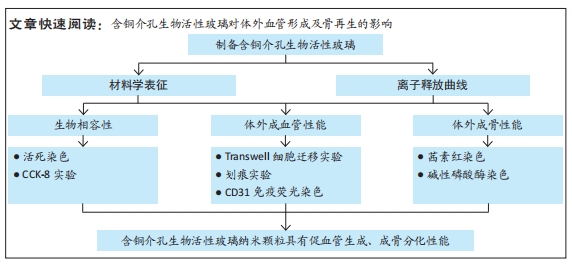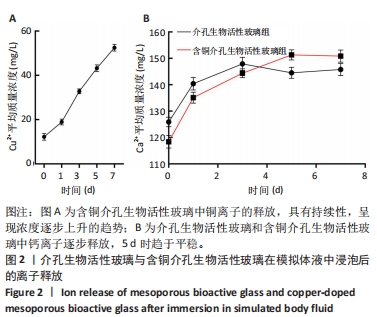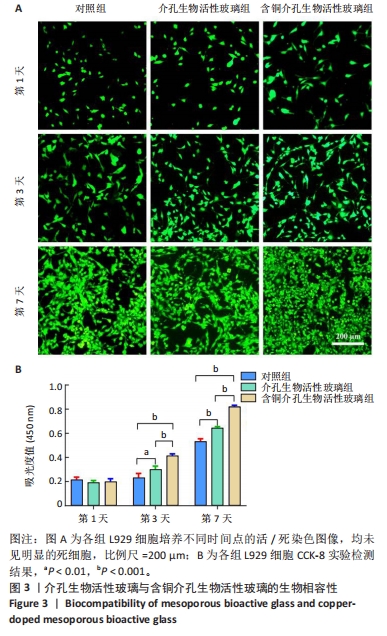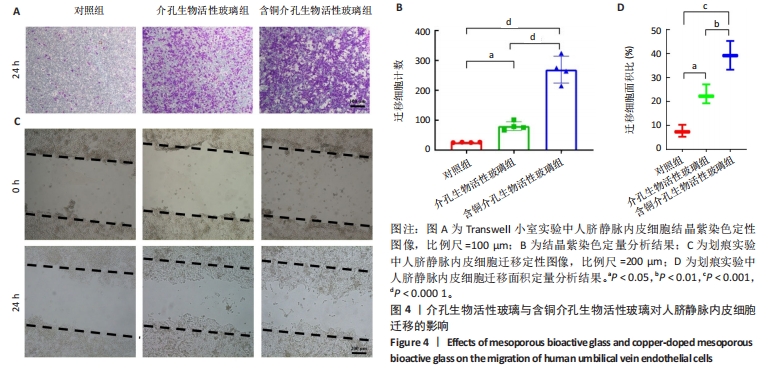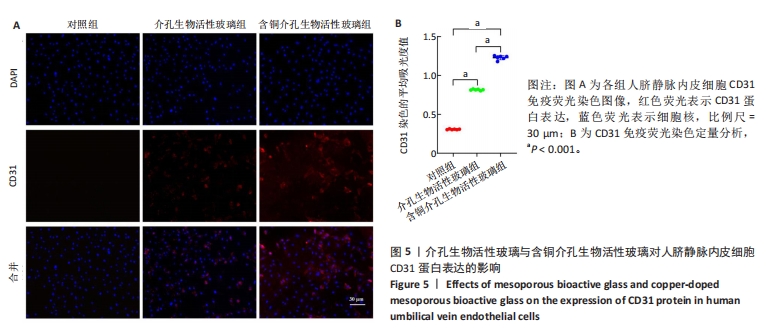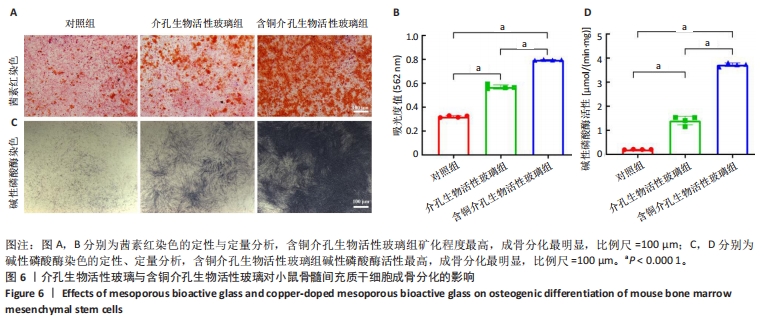[1] HENCH LL, THOMPSON I. Twenty-first century challenges for biomaterials. J R Soc Interface. 2010;7 Suppl 4(Suppl 4):S379-391.
[2] ALDHAHER A, SHAHABIPOUR F, SHAITO A, et al. 3D hydrogel/bioactive glass scaffolds in bone tissue engineering: Status and future opportunities. Heliyon. 2023;9(7):e17050.
[3] LI W, WU Y, ZHANG X, et al. Self-healing hydrogels for bone defect repair. RSC Adv. 2023;13(25):16773-16788.
[4] ABODUNRIN OD, EL MABROUK K, BRICHA M. A review on borate bioactive glasses (BBG): effect of doping elements, degradation, and applications. J Mater Chem B. 2023;11(5):955-973.
[5] O’KEEFE RJ, MAO J. Bone tissue engineering and regeneration: from discovery to the clinic--an overview. Tissue Eng Part B Rev. 2011; 17(6):389-392.
[6] KOUSHIK TM, MILLER CM, ANTUNES E. Bone Tissue Engineering Scaffolds: Function of Multi-Material Hierarchically Structured Scaffolds. Adv Healthc Mater. 2023;12(9):e2202766.
[7] HENG BC, BAI Y, LI X, et al. Electroactive Biomaterials for Facilitating Bone Defect Repair under Pathological Conditions. Adv Sci (Weinh). 2023;10(2):e2204502.
[8] BARRETO MEV, MEDEIROS RP, SHEARER A, et al. Gelatin and Bioactive Glass Composites for Tissue Engineering: A Review. J Funct Biomater. 2022;14(1):23.
[9] ERIKSSON E, BJÖRKENHEIM R, STRÖMBERG G, et al. S53P4 bioactive glass scaffolds induce BMP expression and integrative bone formation in a critical-sized diaphysis defect treated with a single-staged induced membrane technique. Acta Biomater. 2021;126:463-476.
[10] HE L, YIN J, GAO X. Additive Manufacturing of Bioactive Glass and Its Polymer Composites as Bone Tissue Engineering Scaffolds: A Review. Bioengineering (Basel). 2023;10(6):672.
[11] BIGHETTI-TREVISAN RL, SOUZA ATP, TOSIN IW, et al. Bioactive glass-ceramic for bone tissue engineering: an in vitro and in vivo study focusing on osteoclasts. Braz Oral Res. 2022;36:e022.
[12] VALLET-REGÍ M. Nanostructured mesoporous silica matrices in nanomedicine. J Intern Med. 2010;267(1):22-43.
[13] YAN X, YU C, ZHOU X, et al. Highly ordered mesoporous bioactive glasses with superior in vitro bone-forming bioactivities. Angew Chem Int Ed Engl. 2004;43(44):5980-5984.
[14] YAN X, HUANG X, YU C, et al. The in-vitro bioactivity of mesoporous bioactive glasses. Biomaterials. 2006;27(18):3396-3403.
[15] VALLET-REGÍ M, COLILLA M, IZQUIERDO-BARBA I, et al. Achievements in Mesoporous Bioactive Glasses for Biomedical Applications. Pharmaceutics. 2022;14(12):2636.
[16] MENGER MM, LASCHKE MW, NUSSLER AK, et al. The vascularization paradox of non-union formation. Angiogenesis. 2022;25(3):279-290.
[17] FANG TD, SALIM A, XIA W, et al. Angiogenesis is required for successful bone induction during distraction osteogenesis. J Bone Miner Res. 2005;20(7):1114-1124.
[18] HUANG J, HAN Q, CAI M, et al. Effect of Angiogenesis in Bone Tissue Engineering. Ann Biomed Eng. 2022;50(8):898-913.
[19] XU Z, KUSUMBE AP, CAI H, et al. Type H blood vessels in coupling angiogenesis-osteogenesis and its application in bone tissue engineering. J Biomed Mater Res B Appl Biomater. 2023;111(7):1434-1446.
[20] CHEN L, LIU J, GUAN M, et al. Growth Factor and Its Polymer Scaffold-Based Delivery System for Cartilage Tissue Engineering. Int J Nanomedicine. 2020;15:6097-6111.
[21] XU HL, YU WZ, LU CT, et al. Delivery of growth factor-based therapeutics in vascular diseases: Challenges and strategies. Biotechnol J. 2017;12(5):1600243.
[22] KARGOZAR S, MONTAZERIAN M, HAMZEHLOU S, et al. Mesoporous bioactive glasses: Promising platforms for antibacterial strategies.Acta Biomater. 2018;81:1-19.
[23] JANA S, DATTA P, DAS H, et al. Copper and cobalt doped bioactive glass-fish dermal collagen electrospun mat triggers key events of diabetic wound healing in full-thickness skin defect model. J Mech Behav Biomed Mater. 2022;134:105414.
[24] LI Y, LUO W, LIU Y, et al. Copper-containing titanium alloys promote the coupling of osteogenesis and angiogenesis by releasing copper ions. Biochem Biophys Res Commun. 2023;681:157-164.
[25] LI S, ZHANG L, LIU C, et al. Spontaneous immunomodulation and regulation of angiogenesis and osteogenesis by Sr/Cu-borosilicate glass (BSG) bone cement to repair critical bone defects. Bioact Mater. 2023;23:101-117.
[26] ZHAO Q, NI Y, WEI H, et al. Ion incorporation into bone grafting materials. Periodontol 2000. 2024;94(1):213-230.
[27] SALVO J, SANDOVAL C. Role of copper nanoparticles in wound healing for chronic wounds: literature review. Burns Trauma. 2022;10:tkab047.
[28] VERGNAUD F, MEKONNEN B, EL ABBASSI A, et al. Correlating the Effect of Composition and Textural Properties on Bioactivity for Pristine and Copper-Doped Binary Mesoporous Bioactive Glass Nanoparticles. Materials (Basel). 2023;16(20):6690.
[29] HOSSEINI M, HASSANI BESHELI N, DENG D, et al. Facile post modification synthesis of copper-doped mesoporous bioactive glass with high antibacterial performance to fight bone infection. Biomater Adv. 2023;144:213198.
[30] WESTHAUSER F, WILKESMANN S, NAWAZ Q, et al. Effect of manganese, zinc, and copper on the biological and osteogenic properties of mesoporous bioactive glass nanoparticles. J Biomed Mater Res A. 2021;109(8):1457-1467.
[31] ANAND A, SENGUPTA S, KAŇKOVÁ H, et al. Influence of Copper-Strontium Co-Doping on Bioactivity, Cytotoxicity and Antibacterial Activity of Mesoporous Bioactive Glass. Gels. 2022;8(11):743.
[32] ZHANG Y, ZHANG W, ZHANG X, et al. Erbium-ytterbium containing upconversion mesoporous bioactive glass microspheres for tissue engineering: luminescence monitoring of biomineralization and drug release. Acta Biomater. 2023;168:628-636.
[33] JIMÉNEZ-HOLGUÍN J, ARCOS D, LOZANO D, et al. In Vitro and In Vivo Response of Zinc-Containing Mesoporous Bioactive Glasses in a Sheep Animal Model. Int J Mol Sci. 2022;23(22):13918.
[34] ZARKOV A. Sol-Gel Technology Applied to Materials Science: Synthesis, Characterization and Applications. Materials (Basel). 2024;17(2):462.
[35] HAN J, HASSANI BESHELI N, DENG D, et al. Tailoring Copper-Doped Bioactive Glass/Chitosan Coatings with Angiogenic and Antibacterial Properties. Tissue Eng Part C Methods. 2022;28(7):314-324.
[36] SANCHEZ C, BOISSIèRE C, GROSSO D, et al. Design, Synthesis, and Properties of Inorganic and Hybrid Thin Films Having Periodically Organized Nanoporosity. Chem Mater. 2008;20(3):682-737.
[37] DESHMUKH K, KOVÁŘÍK T, KŘENEK T, et al. Recent advances and future perspectives of sol–gel derived porous bioactive glasses: a revie. RSC Adv. 2020;10(56):33782-33835.
[38] ZHU Y, WU C, RAMASWAMY Y, et al. Preparation, characterization and in vitro bioactivity of mesoporous bioactive glasses (MBGs) scaffolds for bone tissue engineering. Microporous Mesoporous Mater. 2008; 112(1-3):494-503.
[39] ZHENG K, BIDER F, MONAVARI M, et al. Sol-gel derived B(2)O(3)-CaO borate bioactive glasses with hemostatic, antibacterial and pro-angiogenic activities. Regen Biomater. 2024;11:rbad105.
[40] JONES JR, EHRENFRIED LM, HENCH LL. Optimising bioactive glass scaffolds for bone tissue engineering. Biomaterials. 2006;27(7):964-973.
[41] SHEN Q, QI Y, KONG Y, et al. Advances in Copper-Based Biomaterials With Antibacterial and Osteogenic Properties for Bone Tissue Engineering. Front Bioeng Biotechnol. 2021;9:795425.
[42] ZHANG Z, XUE H, XIONG Y, et al. Copper incorporated biomaterial-based technologies for multifunctional wound repair. Theranostics. 2024;14(2):547-570.
[43] ALASVAND N, BEHNAMGHADER A, MILAN PB, et al. Tissue-engineered small-diameter vascular grafts containing novel copper-doped bioactive glass biomaterials to promote angiogenic activity and endothelial regeneration. Mater Today Bio. 2023;20:100647.
[44] KANCZLER JM, OREFFO RO. Osteogenesis and angiogenesis: the potential for engineering bone. Eur Cell Mater. 2008;15:100-114.
[45] TAO J, MIAO R, LIU G, et al. Spatiotemporal correlation between HIF-1α and bone regeneration. FASEB J. 2022;36(10):e22520.
[46] VAN BRAKEL F, ZHAO Y, VAN DER EERDEN BCJ. Fueling recovery: The importance of energy coupling between angiogenesis and osteogenesis during fracture healing. Bone Rep. 2024;21:101757.
[47] YANG Y, LI M, LUO H, et al. Surface-Decorated Graphene Oxide Sheets with Copper Nanoderivatives for Bone Regeneration: An In Vitro and In Vivo Study Regarding Molecular Mechanisms, Osteogenesis, and Anti-infection Potential. ACS Infect Dis. 2022;8(3):499-515.
[48] KARKEHABADI H, RAHMATI A, ABBASI R, et al. Effect of copper oxide nanoparticles and light-emitting diode irradiation on the cell viability and osteogenic/odontogenic differentiation of human stem cells from the apical papilla. BMC Oral Health. 2023;23(1):249.
[49] QIU X, FENG C, WANG W, et al. Copper-deposited diatom-biosilica enhanced osteogenic potential in periodontal ligament stem cells and rat cranium. J Biomed Mater Res B Appl Biomater. 2023;111(6): 1286-1298.
[50] FIEHN LA, KUNISCH E, SAUR M, et al. A comparative in vitro and in vivo analysis of the impact of copper substitution on the cytocompatibility, osteogenic, and angiogenic properties of a borosilicate bioactive glass. J Biomed Mater Res A. 2024;112(10):1740-1759.
[51] LIU J, XIAO Q, XIAO J, et al. Wnt/β-catenin signalling: function, biological mechanisms, and therapeutic opportunities. Signal Transduct Target Ther. 2022;7(1):3.
[52] TAN Z, ZHOU B, ZHENG J, et al. Lithium and Copper Induce the Osteogenesis-Angiogenesis Coupling of Bone Marrow Mesenchymal Stem Cells via Crosstalk between Canonical Wnt and HIF-1α Signaling Pathways. Stem Cells Int. 2021;2021:6662164.
[53] ZHANG Y, HAO Z, WANG P, et al. Exosomes from human umbilical cord mesenchymal stem cells enhance fracture healing through HIF-1α-mediated promotion of angiogenesis in a rat model of stabilized fracture. Cell Prolif. 2019;52(2):e12570.
|
